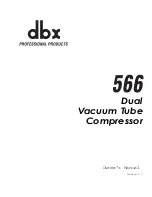
Compensation Procedures
EPC9 Manual
65
An analysis of the underlying offset problem and justification for the procedures can
be found in Neher (1995).
The rule for calculating the
Offset Sum
(
LJ
) is to form the sum of all changes in offsets
which occur between the reference measurement and the test measurement. The
polarity of a given offset voltage should be taken as viewed from the amplifier input
(positive, if positive side of the voltage source is closer to the input). A sign inversion
has to be applied if the offset under consideration disappears.
A procedure how to measure liquid junction potentials is described in Neher (1992).
Ion mobilities for calculation of liquid junction potentials can be found in Barry &
Lynch (1991). The table below lists the values for some typical solutions.
Solution
LJ
145 K-glutamate, 8 NaCl, 1 MgCl
2
, 0.5 ATP, 10 NaOH-HEPES
10 mV
145 KCl, 8 NaCl, 1 MgCl
2
, 0.5 ATP, 10 NaOH-HEPES
3 mV
60 Cs-citrate, 10 CsCl, 8 NaCl, 1 MgCl
2
, 0.5 ATP, 20 CsOH-HEPES
12 mV
32 NaCl, 108 Tris-Cl, 2.8 KCl, 2 MgCl
2
, 1 CaCl
2
, 10 NaOH-HEPES
–3 mV
70 Na
2
SO4, 70 sorbitol, 2.8 KCl, 2 MgCl
2
, 1 CaCl
2
, 10 NaOH-HEPES
6 mV
In each case, a liquid junction potential between the given solution and physiological
saline (main salt: 140 mM NaCl) is listed. Polarity is that of physiological saline with
respect to the given solution (according to the convention of Barry & Lynch).
Note:
When applying the above rules for calculating the correction LJ, two sign inversions
of the liquid junction potential are effective for the standard liquid junction potential
correction. First, the liquid junction potential that was present during the reference
measurement disappears during the experiment (after seal formation). Second,
according to Barry & Lynch, the potentials are defined with opposite polarity as
those for patch-clamp experiments (bath vs. electrode instead of electrode vs. bath).
Thus, values in the table can be taken as they are and entered as such in the LJ
control. If however, a liquid junction potential appears during a measurement (e.g.,
during solution changes), then only one sign inversion applies. In that case, the sign
of the value in the table must be inverted before adding it to the “Correction Sum”.
In the following, some specific examples together with explanations will be given. In
all these cases it is assumed that the reference measurement is performed in standard
saline.
Example 1
: An outside-out or whole-cell measurement with normal saline in the
pipette. In this case,
LJ
should be set to zero. This is one of the few measurements
which do not require any correction. It is quite unphysiological, however.
















































